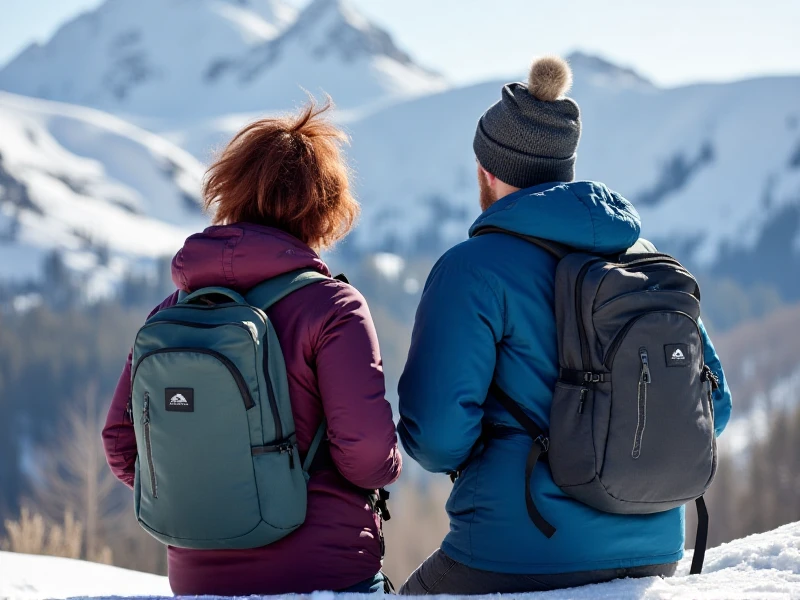How to Choose the Perfect Women's Outdoor Backpack for Every Adventure
2025-06-05

Okay, here is an SEO-optimized article about Women's Outdoor Backpacks, crafted to blend naturally and provide value without obvious AI markers.
Finding the right women's outdoor backpack isn't just about carrying your gear; it's about comfort, functionality, and enjoying your adventures to the fullest. Whether you're conquering mountain trails, exploring coastal paths, camping under the stars, commuting to work, or navigating the urban jungle, the ideal pack makes all the difference. But with so many options on the market, how do you find "the one"? Let's break down the key factors to consider when selecting your next essential adventure companion.
1. Prioritize Fit and Comfort: It's Science AND Anatomy
This is paramount. An ill-fitting women's outdoor backpack can lead to sore shoulders, achy backs, and shortened outings. Look specifically for backpacks designed with the female form in mind:
Torso Length: Women typically have proportionally shorter torsos than men. Crucially, packs should be sized by torso length (often S, M, L) and not just overall capacity. Measure yours accurately using manufacturer guides.
Shoulder Straps: Seek contoured, often S-curved straps that wrap comfortably around the curve of the bust and sit securely on the shoulders without chafing collarbones.
Hipbelt: This transfers most of the weight to your powerful hips. A women's specific outdoor backpack will have a shorter, wider, and often more heavily padded hipbelt designed to sit securely on the female pelvic structure.
Back Panel: Ventilated mesh panels significantly reduce back sweat. Look for flexible frames or internal framesheets shaped for the curvature of the female back.
2. Define Your Purpose: Pack for the Activity
Are you searching for a women's outdoor backpack primarily for hiking, camping, trail running, commuting, or travel? Capacity and features vary drastically:
Day Hiking/Fitness: The most common category! Look for capacities between 15-30 liters. Key features: hydration reservoir compatibility, easy-access pockets (top/bottle sides), lightweight construction, perhaps a small tool attachment like hiking pole loops.
Overnight/Multi-Day Backpacking: Moving into 30-60 liter territory. Essential features include a robust suspension system (internal frame), load lifters, multiple access points (top/front/side), gear loops, sleeping bag compartment, and significant comfort under heavier loads (20-30 lbs). Weight distribution becomes critical.
Travel/Carry-On: Look for sleek designs (≈35-45 liters for max carry-on) with suitcase-style opening, compression straps, lockable zippers, and potentially a laptop sleeve. Comfortable straps for navigating airports and cities are key.
Commuting: Blend style with practicality. Look for dedicated padded laptop compartments (size matters!), comfortable straps, easy-access pockets for keys/wallet/phone, weather resistance/rain cover, and maybe a helmet attachment spot. 20-30 liters often suffices.
Trail Running/Fastpacking: Prioritize ultralight, minimal bounce, hydration features (chest-strap bottle pockets or reservoir), and easy access without stopping. Capacities are typically smaller (5-20L range).
3. Capacity: Be Honest About Your Needs
Resist the urge to always go bigger. An oversized, underfilled pack shifts weight poorly and is cumbersome. Conversely, an overflowing pack is uncomfortable.
Precisely list the gear you need for your typical outing. Allow a little room for essentials acquired on the go (water, snacks, souvenirs) or unexpected layers.
The women's outdoor backpack capacity should comfortably hold essential gear plus minimal 'just-in-case' items. For day hiking, a 20-25L pack is often perfect for most seasons.
Utilize pack volume guides provided by brands as a starting point.
4. Key Features to Elevate Your Experience
Beyond fit and size, details matter:
Access Points: Top-loaders are common; panel-loading (zipper opens most of the front) or front U-zips are fantastic for accessing items buried deep without emptying the whole pack.
Pocket Variety & Placement: Valuables pocket, quick-access phone pocket on shoulder strap (like stretch mesh), spacious stretch water bottle pockets that hold bottles securely, hipbelt pockets for snacks/camera/phone – these small features drastically improve usability.
Hydration Compatibility: Built-in internal hydration sleeve and hose port are essential for hiking/running packs. Check compatibility with your reservoir size.
Material & Durability: Look for ripstop nylon fabrics (like Cordura or ballistic nylon) for abrasion resistance. Denier (D) indicates thickness – higher often means tougher (e.g., 210D/420D). Water-resistant coatings or included lightweight rain covers are crucial investments for unpredictable weather.
Ventilation: Breathable mesh suspension back panels drastically increase comfort by minimizing sweat buildup during exertion. This is non-negotiable for warm-weather or high-intensity activities.
Adjustability: Fine-tuning your fit is vital, especially on multi-day packs. Look for easily adjustable shoulder straps, load lifters (top straps pulling the pack close to your shoulders), and sternum straps with sliding adjustment.
Compression Straps: These strategically placed straps help stabilize your load by cinching the backpack smaller when not full or preventing contents from shifting, improving balance and comfort significantly.
5. Brand Matters: Investing in a Trusted Partner
While price varies, reputable outdoor brands like Osprey (known for extensive women's specific designs like Tempestra and Sirrus lines), Gregory (Jade and Maya lines), Deuter (Futura SL womens' systems), REI Co-op (Trail packs), Mammut, Patagonia, The North Face, and others invest heavily in ergonomic research specifically for women. Investing in a pack with a durable construction and a strong warranty (like Osprey's All Mighty Guarantee) means you'll likely have a reliable companion for years.
Choosing Your Perfect Women's Outdoor Backpack:
Ready to find your ideal pack?
1. Know Your Activity & Capacity: What will you do most? How much gear?
2. Focus Ruthlessly on Fit: Measure your torso. Try packs ON, loaded with weight. Walk around the store with them. Adjust every strap. Does it disappear? Or is pressure felt?
3. Prioritize Essential Features: Hydration? Hipbelt pockets? Accessibility?
4. Consider Material & Weather Resistance: Will you face rain or abrasive rocks?
5. Don't Forget Personal Preference: Color, organization style – you should love it!
A truly great women's outdoor backpack becomes an effortless extension of yourself on any journey. By understanding your body's needs and your adventure goals, you'll unlock countless miles of comfort and freedom. Now go find your perfect adventure partner!
Category: